Today is Vaisakhi, the second most important day of the year on the Punjabi calendar, on which Sikhs from around the world celebrate a triad of events. The first, dating back to before the consolidation of Sikhism, is the first harvest of crops for the year, and as such many Sikh communities hold harvest festivals either in India or in the diaspora nations. Second, it is the day that the 10th Guru of Sikhism, Guru Gobind Singh, created the Khalsa, an order of warrior-poet-holy men to defend to lands of Punjab, and which still marks out men as Sikh devotees today. READ about the third and more about the second below… (1699)
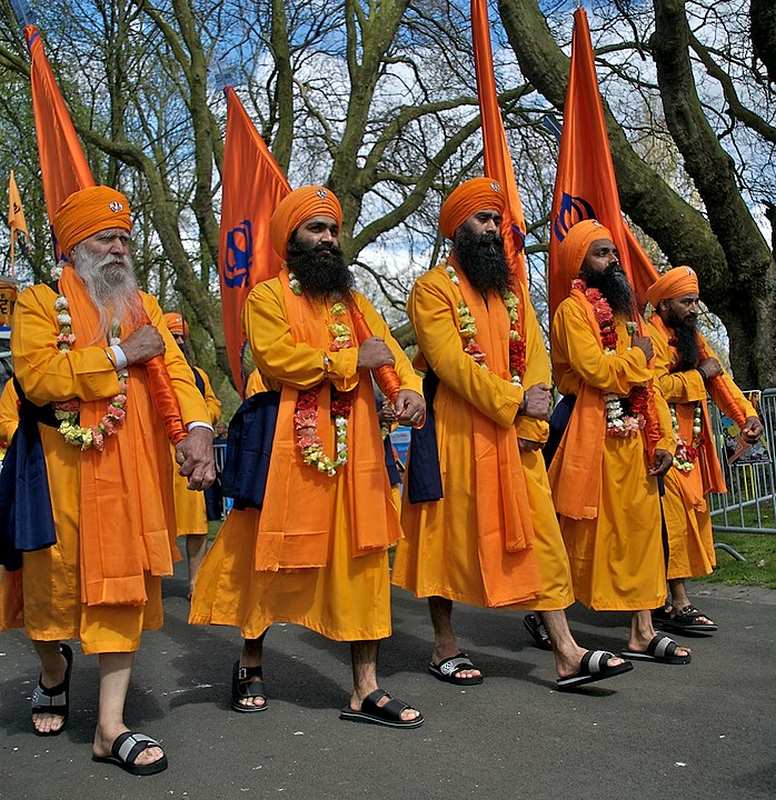
On Vaisahki, many Sikhs hold hold kirtans, or celebrations of religious musical art and performances. They also visit local gurdwaras, which are the consecrated sites equivalent to churches, mosques, or stupas, and frequent community fairs where they gather to socialize and share festive foods.
The harvest component of Vaisahki is also celebrated by Hindus, who take the day as an opportunity to bathe in the Ganges or other holy rivers. As such, April 13th is exceptionally colorful across India.
The day also commemorates tragedy and sacrifice. On April 13th, the 9th Guru of Sikhism, Guru Tegh Bahadur, refused to convert to Islam under orders of the Mughal Emperor, and was executed. Also on this day, British Bengal Army officer Reginald Dyer orders his troops to shoot into a protesting crowd, an event which would come to be known the Jallianwala Bagh massacre, a prominent event in the course of Indian Independence.
It’s also New Years Day in Nepal, Cambodia, Sri Lanka, Myanmar, Thailand, parts of northern India, and within the Dai people of southern China/Asia, who celebrate April 13th with the world’s largest water splashing fight.
MORE Good News on this Date:
- George Frideric Händel’s Messiah performed for the first time in Dublin (1742)
- Roman Catholics in the United Kingdom gained the right to vote and sit in Parliament with the Royal Assent of the Roman Catholic Relief Act (1829)
- Let’s Stay Together soul singer, Al Green, who now preaches as a reverend in a Memphis church, was born (1946)
- Sidney Poitier became the first black man to win an Oscar for best actor — for Lilies of the Field— after growing up in poverty in the Bahamas and spending his first months in New York sleeping in a bus station men’s room (1964)
- The longest doubles table tennis match ended after a 4-day marathon between four Americans—Lance, Phil, and Mark Warren and Bill Weir—that lasted an absurd 101 hours 1 minute 11 seconds (1979)
- Harold Washington was elected the first African-American mayor in Chicago’s history (1983)
- Tiger Woods (the first black golfer ever to win a major) became the youngest player ever to win the US Masters Tournament at Augusta, Georgia, leaving his opponents far behind and smashing every record in the book with a margin of 12 strokes (1997)
325 years ago today, the Sikh religion is formalized by the Khalsa, the Brotherhood of Warrior Saints, by the 10th Guru of Sikhism, Gobind Singh. Guru Singh set down “the Five Ks,” or the five articles of faith that Khalsa Sikhs wear at all times, and is also credited with the Dasam Granth whose hymns are a sacred part of Sikh prayers and Khalsa rituals.
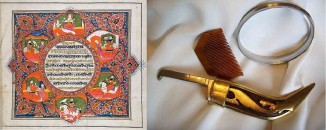
Focusing on what Gobind Singh did on this day rather than Sikhism has a whole, he organized the Punjabi warrior-poet-holy men around the ceremonies they follow today. The five Ks are for those who have been initiated by Khanda, or a kind of baptism, and refer to five objects which every Sikh must have on their person every day—uncut hair covered by a turban, or dastar, an iron bangle, a long dagger, a wooden comb, and a pair of specific cotton underwear.
According to the Sikh tradition, during a harvest festival, The Guru asked for a volunteer. One came forward, whom he took inside a tent. He returned to the crowd alone, with a bloody sword. He asked for another volunteer and repeated the same process of returning from the tent without anyone and with a bloodied sword four more times.
After the fifth volunteer went with him into the tent, the Guru returned with all five volunteers, all safe. He called them the “Panj Pyare” and the first Khalsa in the Sikh tradition. The Guru also gave them a new surname “Singh” (lion) which he took himself.
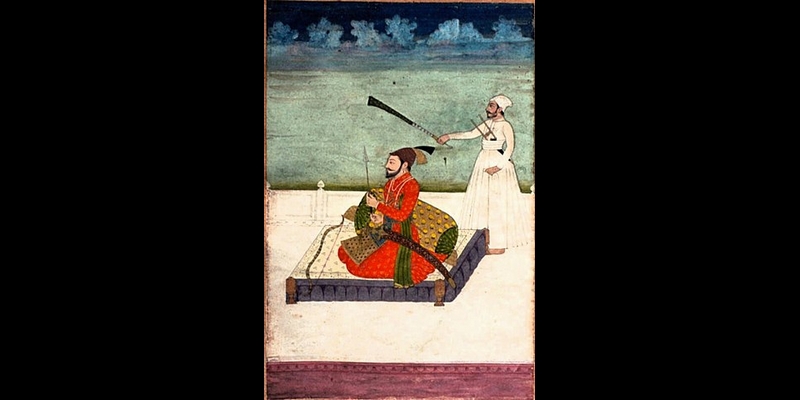
The Khalsa, (literally, Pure Ones), played the key role in protecting the Sikhs long after Gobind Singh’s death, such as during the nine invasions of Punjab and the holy war led by Ahmad Shah Abdali from Afghanistan between 1747 and 1769.
During his life, Gobind Singh fought dozens of battles in defense of his homeland against the Muslim Mughals to his east, and the Afghan-Iranian empires to the west. His leadership and those of his family and trusted allies during the turn of the 17th century ensured Sikhism would stand for all time. Today 28 million live in India, and a sizable diaspora, numbering in the millions can be found in two dozen countries. (1699)
412 years ago today, on a small islet called Ganryū, master swordfighter Miyamoto Musashi defeated Sasaki Kojiro in a duel in what was the equivalent of the heavyweight title match of the age. The event is recognized as the epitome of achievement in a unique blend of warrior skill and cunning strategy. Decades after the duel, Musashi wrote his famous Book of Five Rings explaining his philosophy on life and sword fighting methods, and which to this day is celebrated as much as The Art of War for its bottomless reservoir of commentaries on everything from battle to flower arranging.
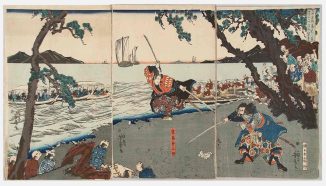
Following the Battle of Sekigahara and the unification of Japan under the shogunate of Tokugawa Ieyasu, an enormous portion of the Japanese warrior-landholding class, the samurai, were suddenly without lords to fight for and wars to fight in. These ronin (masterless samurai) became a societal plague, wandering around dreaming of old glories, drinking themselves silly on credit, and constantly getting in fights.
Out of this chaos came Musashi, a conscript, who supposedly fought at Sekigahara, and who afterwards learned Buddhism from a charismatic monk. He developed a philosophy of excellence in all things, believing that in order to be an excellent sword fighter, one can’t have any holes in their game. He diligently pursued woodcarving, calligraphy, painting, and flower arranging. He also became famous for defeating duelists, even very accomplished ones.
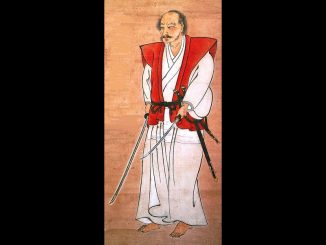
Sasaki Kojiro was the opposite of Musashi. Born into a good family, Kojiro was groomed for high office and had a high degree of swordsmanship himself. The talk of the country was that this rambling, wood-carving ronin who fought with two swords (Musashi) would one day have to fight Kojiro. Eventually, a duel was to be had at the height of the two men’s fame.
Of course this is nearly all unconfirmable, and this tale is based on a combination of various accounts, none of which are particularly reliable. The story of Musashi and Kojiro is essential folklore. But the story goes that, purposely arriving 3 hours late, Musashi had enraged Kojiro with his tardiness. Furthermore, Musashi arrived not with a sword, but with a whittled boat oar in the shape of a sword, and with his hair and clothing quite disheveled: a direct insult to Kojiro’s honor.
Kojiro was allegedly famous, as the story goes, for using a very long sword, and its length was famously stipulated. Musashi carved his boat oar to be just a hair longer, and so when Kojiro struck in anger, Musashi’s counterattack with the longer weapon mortally wounded him.
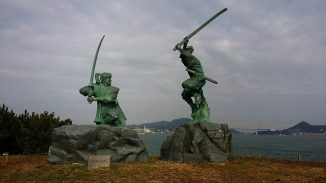
This cemented Musashi as the finest swordsman of the nation, and to this day, a Japanese martial arts school in Mimasaka continues to teach his “Two Heavens Style” of sword fighting, and his “Way of Self-Reliance” philosophy. (1610)
504 years ago today, the final masterpiece from the Italian Renaissance painter Raphael was hung on display at the Vatican one week after the artist’s death.
The culmination of his career, The Transfiguration became one of the most famous oil paintings in the world.
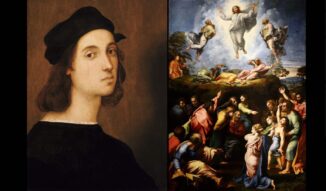
Commissioned by a Catholic cardinal for a French Cathedral, Raphael worked on it until his death on April 6 at age 37—and it stood (13 feet tall) at the head of his casket.
Unusual for its simultaneous depiction of two separate stories from The Bible (Jesus’s transfiguration and the healing of a possessed boy in the lower part of the painting), it stands as an allegory of transformation. It can now be seen in the Pinacoteca Vatican Museum in Vatican City. (1520)
Also, 57 years ago today, the spy comedy film Casino Royale hit movie theaters.
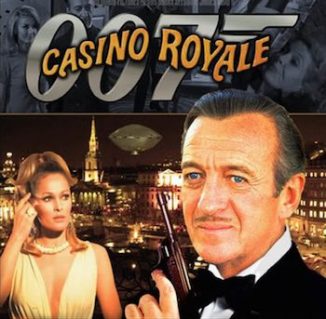 Loosely based on the first James Bond novel by Ian Fleming, the satire features Peter Sellers and David Niven both playing 007, who is forced out of retirement to investigate the deaths of international spies with a plan that has six agents pretending to be James Bond. Also starring Orson Welles and Woody Allen, the farce, co-directed by John Huston, was a financial success, grossing over $41.7 million, with a musical score by Burt Bacharach that earned him an Oscar nomination for the song “The Look of Love”. (1967)
Loosely based on the first James Bond novel by Ian Fleming, the satire features Peter Sellers and David Niven both playing 007, who is forced out of retirement to investigate the deaths of international spies with a plan that has six agents pretending to be James Bond. Also starring Orson Welles and Woody Allen, the farce, co-directed by John Huston, was a financial success, grossing over $41.7 million, with a musical score by Burt Bacharach that earned him an Oscar nomination for the song “The Look of Love”. (1967)
And, 154 years ago today, The Metropolitan Museum of Art was chartered by the state of New York. The new institution started with nothing, unlike other world-famous museums born from royal collections. Today The Met is the largest museum in the world by area, at 2.2 million square feet, and owns some 1.5 million objects covering 5,000 years of art history.
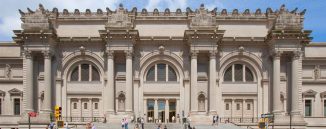
Temporarily closed down last month amid the COVID-19 pandemic, The Met had planned to celebrate its anniversary with a year-long roster of events. The centerpiece is an immersive, thought-provoking journey through 250 superlative works of art of nearly every type.
This postponed exhibition, Making The Met, is set to be organized around the transformational moments and visionary figures that propelled the evolution of the Museum’s collection, buildings, and ambitions from 1870–2020. Though the space is not physically open this month, many of The Met’s offerings are available on their website, including The Met 360° Project, which allows viewers to virtually explore the iconic spaces of its building at 1000 Fifth Avenue. (1870)
And, on this day 281 years ago, Thomas Jefferson, the American Founding Father, principal author of the Declaration of Independence, and third U.S. President was born. As a scientist, philosopher, farmer, self-taught architect, and inventor, he was especially proud of his three years of legislative work to pass the Bill for Establishing Religious Freedom in Virginia.
He was conversant in French, Greek, Italian, Latin, and Spanish, and founder of the University of Virginia, unique in his time for being centered around a library rather than a church to reinforce the principle of separation of church and state.
Jefferson doubled the size of the US during his presidency, orchestrating the acquisition of the vast Louisiana Territory from France, and sent out the Lewis and Clark Expedition to explore the new West. Though considered the greatest US president, he did have his flaws, one being personal money management, and another being slavery. As long as he lived, he expressed opposition to slavery, yet he owned hundreds of slaves to run his 5000-acre farm, and freed only a few of them, which Ken Burns highlighted in a documentary. (1743)
SHARE the Milestones, Memories, and Music…




















